Robert S Day
age ~51
from Providence Forge, VA
- Also known as:
-
- Robert Scott Day
- Robert D Day
- Scott Day
- Day S Robert
- Phone and address:
- 3401 Mt Pleasant Rd, Providence Forge, VA 23140
Robert Day Phones & Addresses
- 3401 Mt Pleasant Rd, Provdence Frg, VA 23140
- Providence Forge, VA
- Dryden, NY
- Quinton, VA
- 4031 Red Wing Ct, Williamsburg, VA 23188 • 7573453414
- Newport News, VA
- Raleigh, NC
- 5900 Allegheny Rd, Williamsburg, VA 23188 • 7575760542
Lawyers & Attorneys

Robert Day - Lawyer
view sourceOffice:
Robert A. Day
Specialties:
Family Law
ISLN:
907969035
Admitted:
1976
Law School:
Western State University, J.D., 1976

Robert Day - Lawyer
view sourceOffice:
Wilson Sonsini Goodrich & Rosati Professional Corporation
Specialties:
Corporate
Securities
Business Law
Securities
Business Law
ISLN:
900689244
Admitted:
1993
University:
Stanford University, A.B., 1989
Law School:
Stanford University Law School, J.D., 1993

Robert Day - Lawyer
view sourceISLN:
907968946
Admitted:
1989
University:
Phillips University, B.S., 1985
Law School:
University of Oklahoma, J.D., 1988
Us Patents
-
Process For Removal Of Undesirable Conductive Material On A Circuitized Substrate And Resultant Circuitized Substrate
view source -
US Patent:6544584, Apr 8, 2003
-
Filed:Mar 7, 1997
-
Appl. No.:08/813765
-
Inventors:Edward Lee Arrington - Owego NY
John Christopher Camp - Owego NY
Robert Jeffrey Day - Dryden NY
Edmond Otto Fey - Vestal NY
Curtis Michael Gunther - Apalachin NY
Thomas Richard Miller - Endwell NY -
Assignee:International Business Machines Corporation - Armonk NY
-
International Classification:B05D 512
-
US Classification:427 96, 427 98, 427304, 427337, 427437, 4274431
-
Abstract:A process for removal of undesirable conductive material (e. g. , catalyst material and seeped circuit material) on a circuitized substrate and the resultant circuitized substrates disclosed. Such process and resultant circuit effectively address the electrical shorting problems caused by nonremoval of the residual catalyst material and circuit material which has seeped under the residual catalyst material. The process includes the steps of: a) providing a catalyst layer (e. g. , palladium and tin) having circuit pattern (e. g. , copper) thereon; b) pretreating the catalyst layer and the circuit pattern (e. g. , with a cyanide dip) for removal of undesirable portions of each which cause electrical leakage between circuit lines of the circuit pattern; c) oxidizing the catalyst layer and the circuit pattern (e. g. , with chlorite, permanganate, hydrogen peroxide, or air at a temperature elevated above ambient conditions); and d) removing the undesirable portions of the catalyst layer and the undesirable portions of the circuit pattern (e. g. , with a cyanide submersion).
-
Process For Manufacturing A Printed Wiring Board
view source -
US Patent:6775907, Aug 17, 2004
-
Filed:Sep 14, 2000
-
Appl. No.:09/661738
-
Inventors:Christina M. Boyko - Endicott NY
Robert J. Day - Dryden NY
Kristen A. Stauffer - Vestal NY -
Assignee:International Business Machines Corporation - Armonk NY
-
International Classification:H01K 310
-
US Classification:29852, 29846, 427 96, 427 97
-
Abstract:The present invention teaches a simplified process for fabricating high density printed wiring boards using a semi-additive process. Steps required to achieve this objective include adhering an electroless plated copper commoning layer to a surface roughened dielectric substrate. Subsequently, the commoning layer is photolithographically personalized by covering the commoning layer with a resist and then uncovering predetermined areas of the aforementioned commoning layer. Consequently, the semi-additive method involves electroplating copper onto the uncovered areas of the commoning layer, thereby generating copper features and circuitry. Finally, the semi-additive process requires the stripping of the remaining photoresist, and the unplated electroless copper layer is etched in order to electronically isolate the copper features and circuitry lines.
-
Process For Manufacturing A Printed Wiring Board
view source -
US Patent:62127691, Apr 10, 2001
-
Filed:Jun 29, 1999
-
Appl. No.:9/343077
-
Inventors:Christina M. Boyko - Endicott NY
Robert J. Day - Dryden NY
Kristen A. Stauffer - Vestal NY -
Assignee:International Business Machines Corporation - Armonk NY
-
International Classification:H05K 330
-
US Classification:29852
-
Abstract:The present invention teaches a simplified process for fabricating high density printed wiring boards using a semi-additive process. A roughened copper foil is laminated to a dielectric substrate. The foil is subsequently removed from the dielectric to create a roughened, irregular surface on the dielectric substrate. Vertical angle through holes and blind holes are formed in the substrate. A uniform copper commoning layer is electrolessly plated to the roughened dielectric substrate and through holes. A photoresist is applied on the surface of the electroless plated layer and irradiated through a mask having printed circuit features. After developing the photoresist the uncovered electroless layer is electrolytically plated to create the final features and circuitry. After stripping the remaining photoresist the unplated electroless copper layer is etched to electronically isolate the copper features and circuitry lines.
-
Methyl Chloroform-Free Desmear Process In Additive Circuitization
view source -
US Patent:53116607, May 17, 1994
-
Filed:Feb 10, 1993
-
Appl. No.:8/015742
-
Inventors:Warren A. Alpaugh - Chenango Forks NY
Anilkumar C. Bhatt - Johnson City NY
Michael J. Canestaro - Endicott NY
Robert J. Day - Dryden NY
Edmond O. Fey - Vestal NY
John E. Larrabee - Conklin NY -
Assignee:International Business Machines Corporation - Armonk NY
-
International Classification:H01K 310
-
US Classification:29852
-
Abstract:Disclosed is a method of drilling, desmearing, and additively circuitizing a printed circuit board. The printed circuit board is drilled under conditions which produce glass and polymer smeared vias and through holes. The particulate debris is removed by vapor blasting the drilled printed circuit board. Next the printed circuit board is soaked in a solvent to swell the drill smear on the circuit interplanes of the printed circuit board. This solvent is then removed by entrainment in a gas, and a stream of an aqueous, acidic, oxidizing solution is passed through the printed circuit board holes to remove swollen smear in the thru holes and produce an etchback of conductors. After a water rinse an aqueous reducing solution is passed through the printed circuit board to reduce and remove aqueous acidic oxidizing solution, e. g. , residual aqueous acid oxidizing solution. The printed circuit board is rinsed to remove the aqueous reducing solution.
-
Method Of Making A Circuitized Substrate Using Two Different Metallization Processes
view source -
US Patent:57078939, Jan 13, 1998
-
Filed:Dec 1, 1995
-
Appl. No.:8/566363
-
Inventors:Anilkumar Chinuprasad Bhatt - Johnson City NY
Ashwinkumar Chinuprasad Bhatt - Endicott NY
Robert Jeffrey Day - Dryden NY
Thomas Patrick Duffy - Endicott NY
Jeffrey Alan Knight - Endwell NY
Richard William Malek - Johnson City NY
Voya Rista Markovich - Endwell NY -
Assignee:International Business Machines Corporation - Armonk NY
-
International Classification:H01L 21445
-
US Classification:437195
-
Abstract:A process for making a circuitized substrate is defined wherein the substrate is treated with two different, e. g. , additive and subtractive, metallization processes. The process is thus able to effectively produce substrates including conductive features, e. g. , high density circuit lines and chip heat-sinking pads, of two different degrees of resolution in a cost effective and expeditious manner. The resulting product is also defined.
-
Circuitized Substrate With Same Surface Conductors Of Different Resolutions
view source -
US Patent:58174052, Oct 6, 1998
-
Filed:Feb 4, 1997
-
Appl. No.:8/795180
-
Inventors:Anikumar Chinuprasad Bhatt - Johnson City NY
Ashwinkumar Chinuprasad Bhatt - Endicott NY
Robert Jeffrey Day - Dryden NY
Thomas Patrick Duffy - Endicott NY
Jeffrey Alan Knight - Endwell NY
Richard William Malek - Johnson City NY
Voya Rista Markovich - Endwell NY -
Assignee:International Business Machines Corporation - Armonk NY
-
International Classification:B32B 900
-
US Classification:428209
-
Abstract:A process for making a circuitized substrate is defined wherein the substrate is treated with two different, e. g. , additive and subtractive, metallization processes. The process is thus able to effectively produce substrates including conductive features, e. g. , high density circuit lines and chip heat-sinking pads, of two different degrees of resolution in a cost effective and expeditious manner. The resulting product is also defined.
-
Process For Removal Of Undersirable Conductive Material On A Circuitized Substrate And Resultant Circuitized Substrate
view source -
US Patent:60634812, May 16, 2000
-
Filed:Mar 6, 1998
-
Appl. No.:9/036065
-
Inventors:Edward Lee Arrington - Owego NY
John Christopher Camp - Owego NY
Robert Jeffrey Day - Dryden NY
Edmond Otto Fey - Vestal NY
Curtis Michael Gunther - Apalachin NY
Thomas Richard Miller - Endwell NY -
Assignee:International Business Machines Corporation - Armonk NY
-
International Classification:B32B 300
B32B 1504 -
US Classification:428209
-
Abstract:A process for removal of undesirable conductive material (e. g. , catalyst material and seeped circuit material) on a circuitized substrate and the resultant circuitized substrates disclosed. Such process and resultant circuit effectively address the electrical shorting problems caused by nonremoval of the residual catalyst material and circuit material which has seeped under the residual catalyst material. The process includes the steps of: a) providing a catalyst layer (e. g. , palladium and tin) having circuit pattern (e. g. , copper) thereon; b) pretreating the catalyst layer and the circuit pattern (e. g. , with a cyanide dip) for removal of undesirable portions of each which cause electrical leakage between circuit lines of the circuit pattern; c) oxidizing the catalyst layer and the circuit pattern (e. g. , with chlorite, permanganate, hydrogen peroxide, or air at a temperature elevated above ambient conditions); and d) removing the undesirable portions of the catalyst layer and the undesirable portions of the circuit pattern (e. g. , with a cyanide submersion).
Isbn (Books And Publications)

Creative Writing in the Classroom: An Annotated Bibliography of Selected Resources (K-12)
view sourceAuthor
Robert Adams Day
ISBN #
0814109284







Robert Day (1746-1841): The Diaries and the Addresses to Grand Juries 1793-1829
view sourceAuthor
Robert Day
ISBN #
0954790200
Name / Title
Company / Classification
Phones & Addresses
Owners
Araday Enterprises
Contractors - General. Construction & Remodeling Services. Contractors - Bathroom Renovations. Home Improvements. Kitchen & Bath - Design & Remodeling
Contractors - General. Construction & Remodeling Services. Contractors - Bathroom Renovations. Home Improvements. Kitchen & Bath - Design & Remodeling
48 Cavanagh Cres, Stony Plain, AB T7Z 1G6
7809635342, 7809635342
7809635342, 7809635342
Vice-President
Cayuga Heights Volunteer Fire Department
Fire Protection
Fire Protection
194 Pleasant Grv Rd, Ithaca, NY 14850
Manager
Iron Horse 2.0, LLC
Owners
Araday Enterprises
Contractors - General · Construction & Remodeling Services · Contractors - Bathroom Renovations · Home Improvements · Kitchen & Bath - Design & Remodeling
Contractors - General · Construction & Remodeling Services · Contractors - Bathroom Renovations · Home Improvements · Kitchen & Bath - Design & Remodeling
7809635342, 7809635342
COMMUNITY HEALTH OPTIONS LLC
DAY PLUMBING CONTRACTORS LLC
HOPE FOR KIDS, INC
LAB-ALLY LLC
Wikipedia References

Robert Day (Basketball)

Robert Day (Footballer)

Robert Addison Day
License Records
Robert M Day
License #:
56147 - Expired
Issued Date:
Oct 1, 1984
Expiration Date:
Apr 25, 1989
Type:
Salesperson
Robert C Day Rt
License #:
2339 - Expired
Category:
Radiography
Issued Date:
Jan 28, 2002
Effective Date:
Mar 11, 2004
Expiration Date:
Jan 31, 2004
Type:
Medical Radiographer
Robert Charles Day
License #:
83840 - Active
Category:
Nursing Support
Issued Date:
Nov 6, 2015
Effective Date:
Nov 6, 2015
Expiration Date:
Nov 6, 2017
Type:
Medication Aide
Vehicle Records
-
Robert Day
view source -
Address:5900 Allegheny Rd, Williamsburg, VA 23188
-
VIN:1N4AL21E37N405791
-
Make:NISSAN
-
Model:ALTIMA
-
Year:2007
Medicine Doctors

Robert M. Day
view sourceSpecialties:
Cardiovascular Disease
Work:
Cardiology Associates Bradenton
1400 59 St W, Bradenton, FL 34209
9417952468 (phone), 9417949043 (fax)
1400 59 St W, Bradenton, FL 34209
9417952468 (phone), 9417949043 (fax)
Education:
Medical School
University of Pennsylvania School of Medicine
Graduated: 1976
University of Pennsylvania School of Medicine
Graduated: 1976
Procedures:
Cardiac Stress Test
Cardioversion
Continuous EKG
Echocardiogram
Electrocardiogram (EKG or ECG)
Pacemaker and Defibrillator Procedures
Cardioversion
Continuous EKG
Echocardiogram
Electrocardiogram (EKG or ECG)
Pacemaker and Defibrillator Procedures
Conditions:
Atrial Fibrillation and Atrial Flutter
Cardiomyopathy
Heart Failure
Valvular Heart Disease
Abdominal Aortic Aneurysm
Cardiomyopathy
Heart Failure
Valvular Heart Disease
Abdominal Aortic Aneurysm
Languages:
English
Description:
Dr. Day graduated from the University of Pennsylvania School of Medicine in 1976. He works in Bradenton, FL and specializes in Cardiovascular Disease. Dr. Day is affiliated with Blake Medical Center and Manatee Memorial Hospital.

Robert W. Day
view sourceSpecialties:
Diabetes
Work:
Intermountain Medical GroupDiabetes Management Clinic
1134 N 500 W STE 103, Provo, UT 84604
8013577546 (phone), 8013578840 (fax)
1134 N 500 W STE 103, Provo, UT 84604
8013577546 (phone), 8013578840 (fax)
Education:
Medical School
University of Colorado School of Medicine at Denver
Graduated: 1981
University of Colorado School of Medicine at Denver
Graduated: 1981
Procedures:
Vaccine Administration
Electrocardiogram (EKG or ECG)
Electrocardiogram (EKG or ECG)
Conditions:
Anemia
Diabetes Mellitus (DM)
Heart Failure
Acute Myocardial Infarction (AMI)
Acute Renal Failure
Diabetes Mellitus (DM)
Heart Failure
Acute Myocardial Infarction (AMI)
Acute Renal Failure
Languages:
English
German
Spanish
German
Spanish
Description:
Dr. Day graduated from the University of Colorado School of Medicine at Denver in 1981. He works in Provo, UT and specializes in Diabetes. Dr. Day is affiliated with Utah Valley Regional Medical Center.

Robert C. Day
view sourceSpecialties:
Diagnostic Radiology
Work:
Irving Radiological Associates
1901 N Macarthur Blvd, Irving, TX 75061
9725797575 (phone), 9724383931 (fax)
1901 N Macarthur Blvd, Irving, TX 75061
9725797575 (phone), 9724383931 (fax)
Education:
Medical School
University of Florida College of Medicine at Gainesville
Graduated: 1980
University of Florida College of Medicine at Gainesville
Graduated: 1980
Languages:
English
Description:
Dr. Day graduated from the University of Florida College of Medicine at Gainesville in 1980. He works in Irving, TX and specializes in Diagnostic Radiology. Dr. Day is affiliated with Baylor Scott & White Medical Center Irving, Baylor Surgical Hospital At Las Colinas and Baylor Surgical Hospital Fort Worth.

Robert Jeffrey Day
view sourceSpecialties:
Emergency Medicine
Education:
Upstate Medical University Physical Medicine and Rehabilitation (2009)

Robert Glynn Day
view sourceSpecialties:
Family Medicine
Ophthalmology
Ophthalmology
Education:
University of Tennessee (1999)
Plaxo

Robert Day
view sourceSD CaliforniaBAE Systems Past: Head fixer of things that have 'Trons at US Navy

Robert Day
view sourceIndependent Interchange Consultant

Robert Day
view source@Ventures
Googleplus

Robert Day
Education:
Georgian College - Marine Engineering
Tagline:
A proud part of the next generation of seafarers
Bragging Rights:
Survived three years of college fifteen years after dropping out of high school
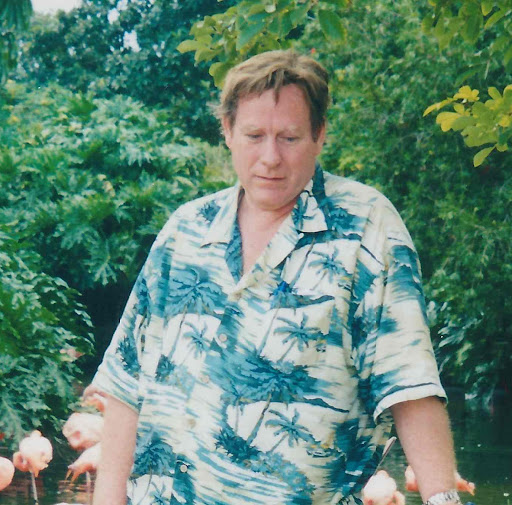
Robert Day
Work:
NYC Bd of Ed - HS Math
Education:
Columbia Teachers College - Mathematics Ed
About:
Raw milk drinker and water floridation opponent.
Bragging Rights:
Survived the NYC Board of Education teaching experience.

Robert Day
Work:
Casino 36 - Croupier/Cashier/Card room Supervisor (2007)
Education:
Kingswinford school - Way to much crap to care about

Robert Day
Work:
A&W Restaurants - Cook (2012)
Mamma Rosa - Prep Cook (2005-2010)
Mamma Rosa - Prep Cook (2005-2010)
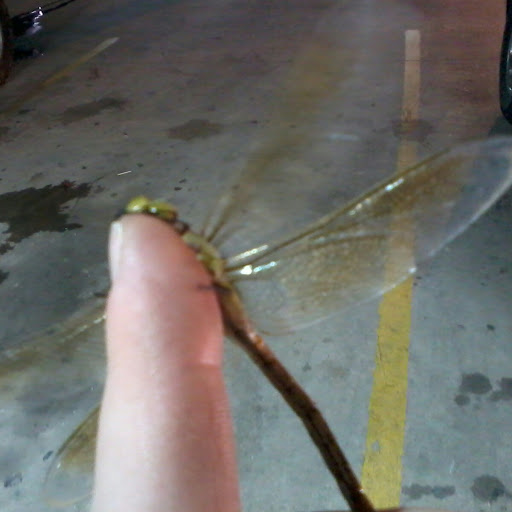
Robert Day
Education:
Lamar University - Fine Art
Relationship:
Single
About:
Rats live on no evil star Murder for a jar of red rum A man, a plan, a canal, Panama!
Tagline:
Same as it ever was...
Bragging Rights:
In girum imus nocte et consumimur igni
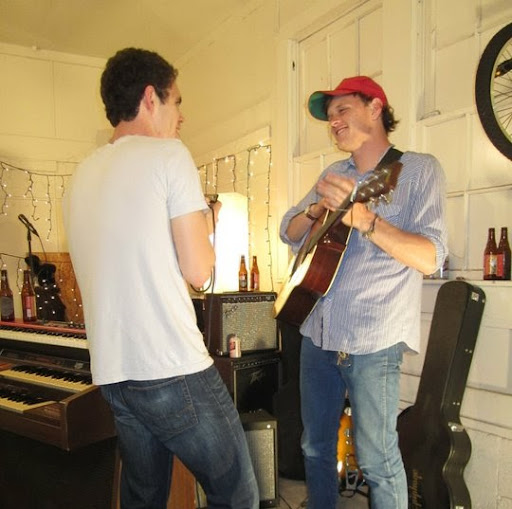
Robert Day
Work:
CDO
Education:
University of North Texas
Tagline:
Hey!
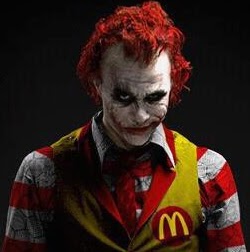
Robert Day
Work:
Marks & Spencer - Customer assistant (13)
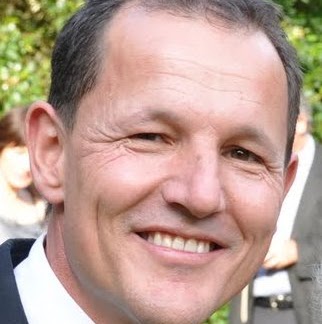
Robert Day
Education:
St Andrew's College
Relationship:
In_civil_union
Flickr

John Robert Day
view source
Robert Mckelvie Day
view source
Robert E. Day Sr.
view source
Robert Travis Day
view source
Robert Day
view source
Robert Day II
view source
Robert Day Jr
view source
Robert Anthony Day
view sourceClassmates

Robert Day
view sourceSchools:
South Side High School Pittsburgh PA 1990-1994
Community:
Ken Holden

Robert Day
view sourceSchools:
Piketon High School Piketon OH 1978-1982
Community:
Jamie Risner, Patricia Barnes

Robert Day
view sourceSchools:
Admiral Billard Academy New London CT 1946-1950
Community:
Robert Brown

Robert Day
view sourceSchools:
Telstar Regional High School Bethel ME 1965-1969
Community:
Nancy Buswell, David Lane, Johnny Wesson, Bridget Gehrling

Robert Day
view sourceSchools:
St. Leo's High School Lewistown MT 1950-1954
Community:
David Peterson, Tony Chamberlain, Sandy Horrall, Beth Olson, Mary Rixe

Robert Day
view sourceSchools:
Whittier Intermediate School Falls Church VA 1971-1972, Breckinridge Training High School Morehead KY 1973-1977
Community:
Mari Thomas, Jerry Winters, Dennis Barber, Ruby Ellington

Robert Day
view sourceSchools:
Bleckley County High School Cochran GA 1996-2000
Youtube
Get Report for Robert S Day from Providence Forge, VA, age ~51













